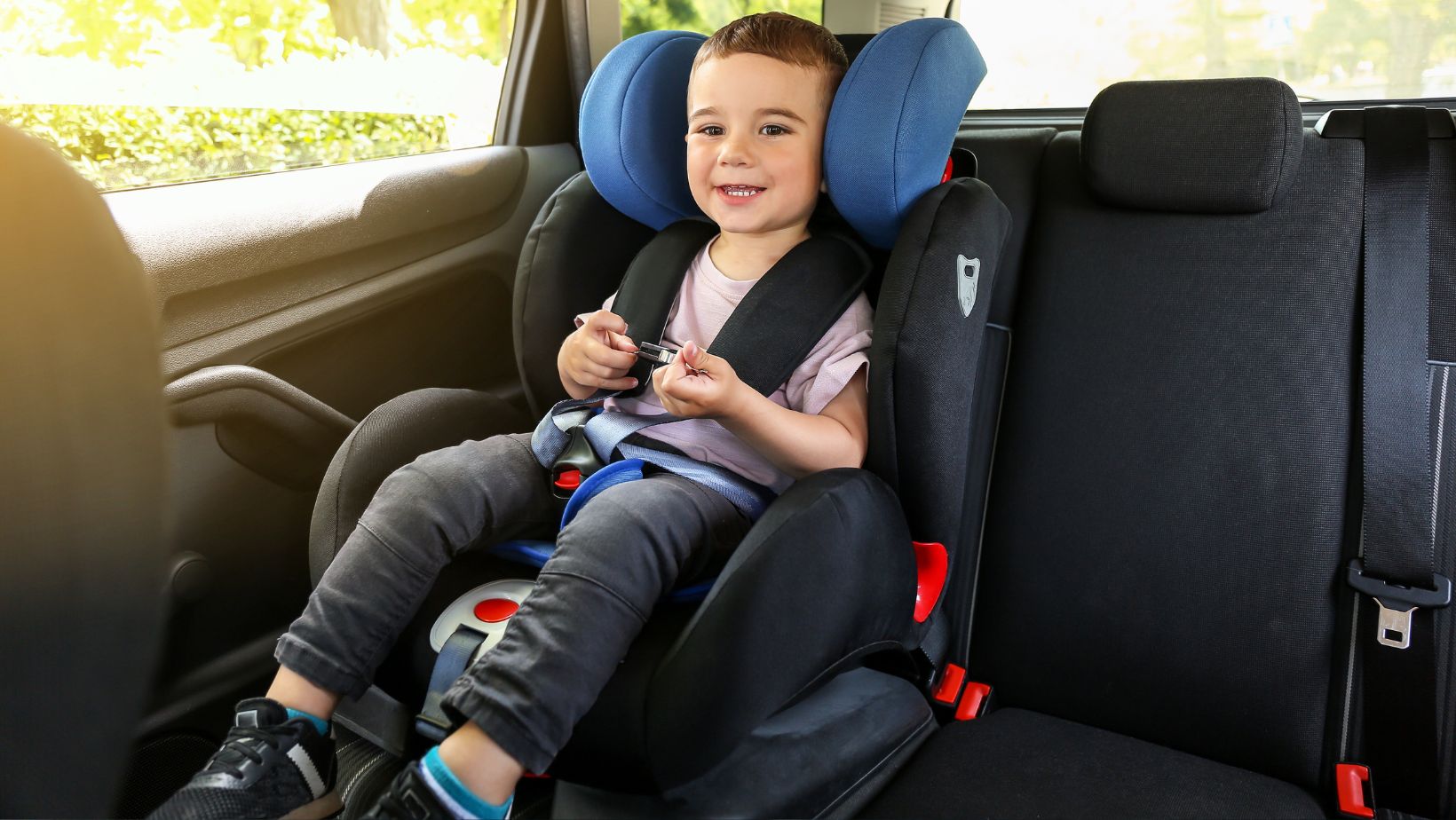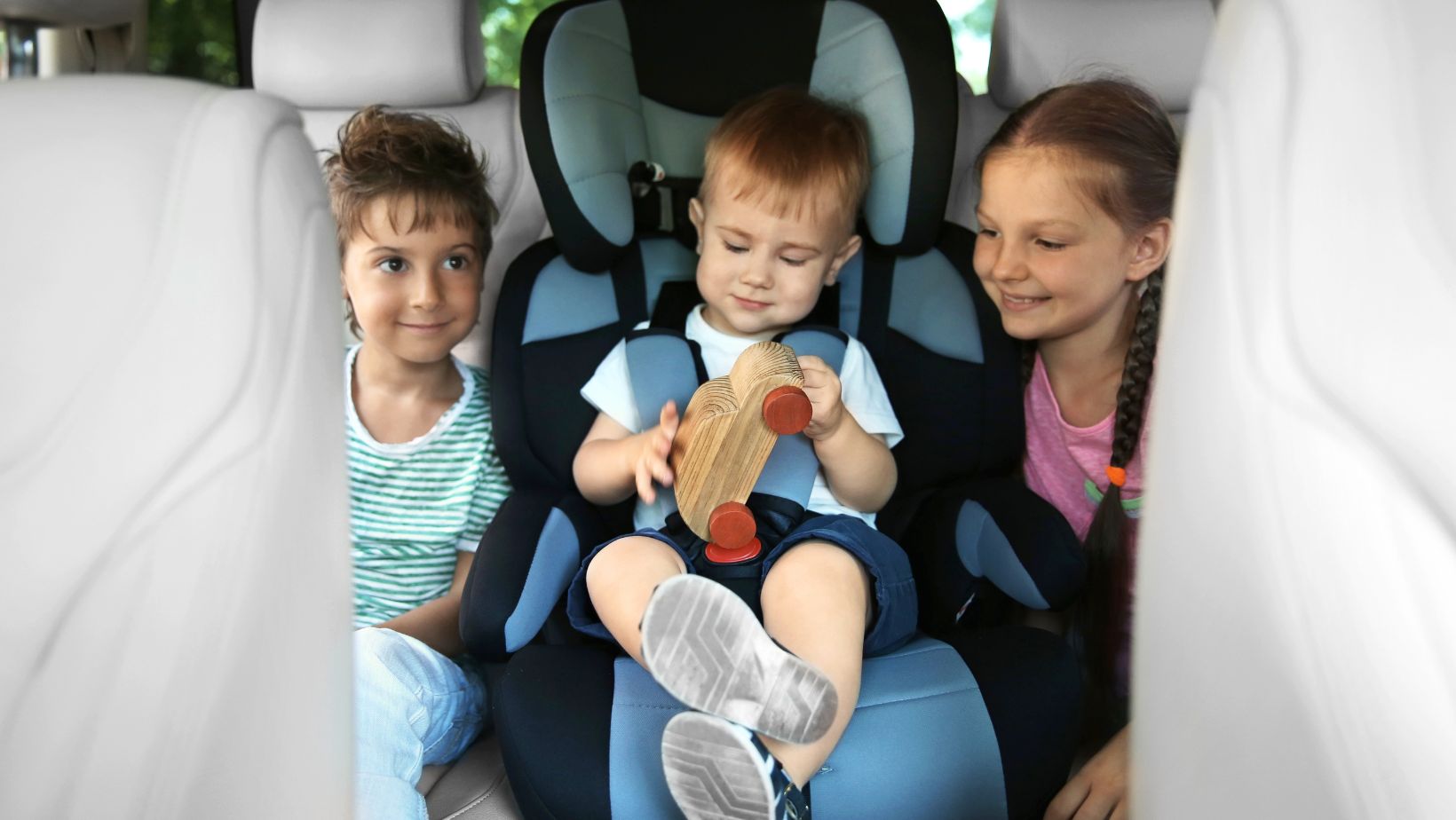7 Tips to Protect Your Children From Car Accidents

To protect your children from car accidents, select the appropriate car seat based on their age, weight, and height, and install it following the manufacturer’s instructions. Always secure seat belts properly. Keep your children in the back seat until they are at least 13. Avoid distractions while driving and set a good example.
Regularly maintain your vehicle, checking tire pressure, brakes, and lights for peak performance. Teach your kids the importance of road and street sign safety. By preparing for these steps; you can make a significant difference in their safety. Learn more about car accident prevention and legal support at https://joneslawsc.com/greenville-car-accident-lawyer/.
Proper Car Seat Installation
Ensuring your child’s safety begins with the correct installation of their car seat. Following proper car seat guidelines is vital to protect your little one in case of an accident. Start by choosing the appropriate car seat based on your child’s age, weight, and height. Always refer to the manufacturer’s instructions and your vehicle’s manual to confirm compatibility.
Perform regular safety checks to make sure the car seat is still securely installed. One of the most important installation tips is to use either the seat belt or the LATCH system, never both. Confirm the car seat doesn’t move more than an inch in any direction when you shake it at the base. Additionally, ensure the harness is snug and positioned at or below your child’s shoulders for rear-facing seats, and at or above for forward-facing seats.
Common mistakes include incorrect recline angles and harness slack. A car seat that’s too upright can cause your baby’s head to flop forward, potentially obstructing their airway. Double-check the angle indicators on the car seat. Avoid bulky clothing that can interfere with the harness’s secure fit.
Taking these preventive steps seriously can make all the difference in protecting your child.
Use Booster Seats Correctly
As your child grows, it’s important to switch to a booster seat to continue providing the necessary protection during car rides. Following booster seat guidelines is vital for your child’s safety. The booster seat guarantees that the seat belt fits properly, positioning the lap belt across the upper thighs and the shoulder belt across the chest. This placement reduces the risk of injury in case of an accident.
To use booster seats correctly, make sure your child is within the recommended weight and height limits specified by the manufacturer. Booster seats are typically for children who’ve outgrown their forward-facing car seats but aren’t yet big enough for the vehicle’s seat belts. Always check these age-appropriate restraints to guarantee they provide the best protection.
Safety precautions include ensuring the booster seat is securely fastened to the car seat and that your child sits upright at all times. Seat belt readiness is key; only shift your child to using the car’s seat belt alone when they can sit with their back against the seat and their knees bent over the edge without slouching. Proper use of booster seats greatly enhances your child’s safety during every journey.
Back Seat Safety
Placing your child in the back seat is a necessary step in maximizing their safety during car rides. The back seat is statistically the safest place in the car, especially for children under 13. When you position your child in the back, you’re notably reducing the risk of injury in case of an accident.
For infants and toddlers, always use rear facing seats. These seats provide better support for your child’s head, neck, and spine in the event of a sudden stop or collision. Make sure that the rear facing seat is securely installed and follows the manufacturer’s guidelines.
As your child grows, shifting to forward-facing seats with appropriate child restraints is vital. These restraints should be adjusted to fit snugly, providing maximum protection. Remember, always refer to the car seat manual and vehicle owner’s manual to confirm compatibility and proper installation.
It’s also important to avoid placing any loose items in the back seat that could become projectiles during an accident. Regularly inspect the car seat for wear and tear and replace it if it has been involved in an accident. By following these steps, you’re taking essential measures to keep your child safe in the back seat.
Secure Seat Belts
Optimizing your child’s seat belt is vital for their safety during every car ride. A properly secured seat belt can make the difference between safety and serious injury. It’s important to ensure the seat belt fits snugly across your child’s shoulder and chest, not their neck or face and lies flat on their upper thighs, not their stomach.
Comfort plays a significant role in seat belt effectiveness. If your child finds the seat belt uncomfortable, they might try to adjust it or remove it altogether, compromising their safety. Look for seat belt comfort pads or covers that can make the belt more comfortable to wear without impacting its effectiveness.
When it comes to child seat options, you have several choices depending on your child’s age, weight, and height. Convertible car seats, booster seats, and all-in-one seats are designed to provide the right level of protection as your child grows. Always follow the manufacturer’s guidelines and ensure the seat is installed correctly in your vehicle.
Regularly check that the seat belt and child seat are in good condition. Frayed belts, worn buckles, or ill-fitting seats should be addressed immediately to maintain the best safety standards.
Avoid Distracted Driving
Keeping your focus on the road is important to ensure your child’s safety during every drive. As a parent, setting a good example by avoiding distractions can greatly reduce the risk of car accidents. Teach your teen driver the significance of undivided attention through proper teen driver education and ongoing parental supervision. This won’t only prepare them for future driving but also highlight the essential role of responsible driving.
Limit your use of technology while driving. Smartphones, GPS devices, and other tech gadgets can easily divert your attention. Set your navigation before you hit the road and keep your phone on silent, or use a ‘Do Not Disturb’ mode. Encourage your children, even as passengers, to understand why these limits are important.
Passenger distractions can also be hazardous. Make sure your child knows the significance of staying calm and quiet while you’re driving. If you have multiple children in the car, establish rules to minimize noise and commotion. Simple steps like these can help maintain your concentration.
Educate on Road Safety
Make sure you teach your children about traffic signals and safe crossing practices.
Explain the meanings of different traffic lights and the importance of using crosswalks.
This knowledge can greatly reduce their risk of accidents.
Teach Traffic Signals
Understanding traffic signals is essential in teaching children how to navigate roads safely and prevent accidents. Start by explaining the basic traffic lights: green means go, red means stop, and yellow means slow down. Make sure they understand pedestrian awareness, like waiting for the walk signal before crossing and looking both ways even when the light is in their favor.
Incorporate bike safety by teaching them to obey the same traffic signals as cars, ensuring they know when to stop and when it’s safe to proceed.
Additionally, discuss school bus rules. Emphasize the importance of waiting for the bus to come to a complete stop and for the driver’s signal before crossing the street. Remind them to stay alert and avoid distractions while near the bus.
When at playgrounds or parks, incorporate playground supervision by teaching them to recognize and obey traffic signals around these areas, reinforcing the importance of staying within designated pedestrian zones.
Safe Crossing Practices
One important aspect of road safety for children is teaching them to always use designated crosswalks and follow pedestrian signals diligently. Start by explaining the significance of pedestrian awareness. Emphasize that children should look left, right, and left again before crossing, even at crosswalks. Encourage them to make eye contact with drivers to verify they’re seen.
In school zones, it’s essential that children understand the heightened risks. Teach them to be extra vigilant and to follow crosswalk etiquette, such as waiting for the crossing guard’s signal. Remind them that cars mightn’t always stop immediately, so they should proceed with caution.
Street signs play a crucial role in safe crossing practices. Show your children what different signs mean and how to respond to them. For example, explain that a stop sign means all traffic must halt, but they should still check for any cars that mightn’t comply.
Regular Vehicle Maintenance
Maintaining your vehicle undergoes regular upkeep, which is vital for keeping children safe during car rides. You should start by checking tire pressure frequently. Properly inflated tires provide better traction and handling, which is essential for avoiding accidents.
Don’t forget regular engine checks to secure your car runs smoothly without unexpected breakdowns. A well-maintained engine can prevent sudden stalls that could put your children at risk.
Brake maintenance is another crucial aspect. Make sure your brake pads, rotors, and calipers are in top condition. Worn-out brakes can significantly increase stopping distances, endangering everyone inside.
Keep an eye on fluid levels, including brake fluid, engine oil, and coolant. Low fluid levels can lead to mechanical failures, compromising your vehicle’s safety features.
Regular upkeep doesn’t stop there. Inspect your vehicle’s lights, including headlights, brake lights, and turn signals. Functional lighting systems ensure you’re visible to other drivers, especially in poor weather conditions or at night.
Additionally, windshield wipers should be replaced periodically to maintain clear visibility during rain.
Frequently Asked Questions
What Should I Do if My Child Is Afraid of Car Rides?
Start by discussing their fears to foster parent-child communication. Implement car therapy techniques to help in overcoming anxiety. Emphasize car safety to reassure them. Gradually increase ride duration to build comfort and confidence.
How Can I Teach My Child to Safely Exit the Car?
To teach your child to safely exit the car, conduct safety drills regularly. Demonstrate how to unbuckle their car seat and identify emergency exits. Focus on parent education to reinforce these skills effectively and guarantee your child’s safety.
Are There Specific Apps to Track Teen Driving Habits?
Yes, there are specific apps with parental controls for monitoring teen driver safety. These apps use technology to track driving habits, offering real-time updates and reports to help guarantee your teen’s safe driving practices.
What Steps Can I Take if My Child Unbuckles Their Seatbelt?
If your child unbuckles their seatbelt, address the child’s behavior immediately. Use seatbelt reminders and reinforce child safety by explaining the dangers and reducing car distractions. Make sure they understand the importance of staying buckled for their safety.
How Do I Choose the Safest Family Car?
To choose the safest family car, prioritize models with advanced safety features like automatic emergency braking and lane-keeping assist. Check crash test ratings from trusted organizations to guarantee excellent protection for your children.
Conclusion
By following these seven tips, you’re taking critical steps to protect your children from car accidents.
Guarantee car seats and booster seats are installed correctly, prioritize back seat safety, and always secure seat belts.
Avoid distractions while driving and educate your kids on road safety habits.
Regular vehicle maintenance can prevent unexpected issues.
With these precautions, you’re fostering a safer environment for your children every time they’re in the car.
-
Personal Finance11 months ago
How Do I Find My UCAS ID Number?
-
Success6 years ago
Consistency: The Key Ingredient to Success
-
Personal Finance11 months ago
What Does Conditionally Approved Mean For An Apartment?
-
Motivation3 years ago
How To Become a More Organized Person?
-
Others5 years ago
Work Health and Safety: 8 Reasons to Maintain a Clutter-free Office
-
Entrepreneurs4 years ago
Why Diversity is Key in Business Marketing
-
HK Pools11 months ago
The HK Pools Forum Comunity Jos Markotop 2D Warna Kuning – A Great Way to Stay Connected
-
Sport2 years ago
What Makes Soccer Betting So Great?





























